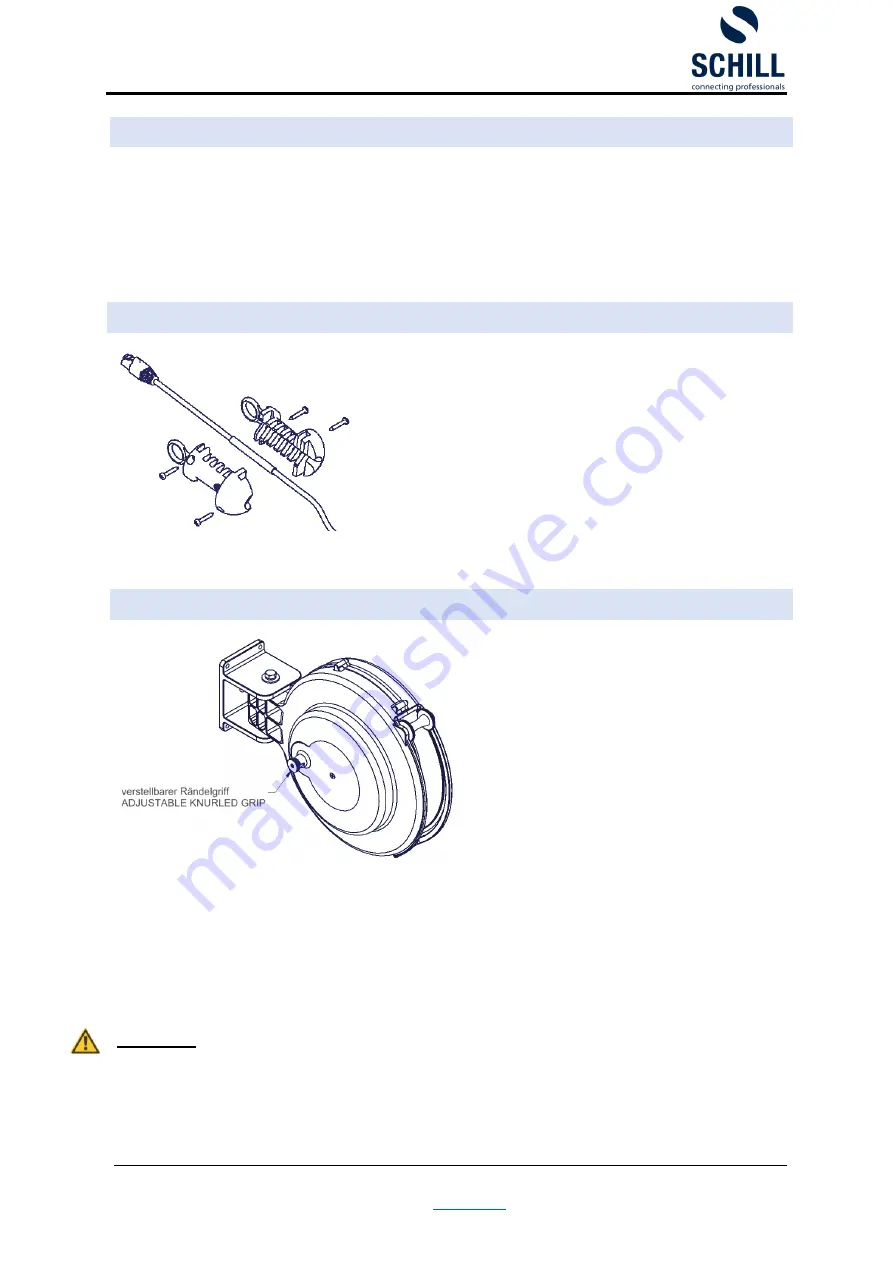
Automatic cable rewinder FT / FTE 350
Fitting and operating instructions
Bedienungsanleitung_FT 350
Seite 15
10.03.2020
Schill GmbH & Co.KG, Bruckstrasse 44, 70734 Fellbach
SPIRAL SPRING
The spiral spring is subject to natural wear and tear and can result in a fatigue
fracture of the spring steel. Based on experience, we recommend changing the
spring after approx.
30.000 operations. The term “operations” defines not only a
complete winding and unwinding of the spring but includes also a partial movement
of the spring. For a safe replacement of the coil spring, please refer to paragraph
(“REPLACING THE SPIRAL SPRING”).
CABLE STOPPER
The length of the available cable can be
individually adjusted with the provided cable
stopper. The safe but considerate clamping
adapts to various cable diameters between 6
and 12 mm. For a thicker cable, a larger version
is available. The stopper also serves as a
safeguard against retraction of the cable in case
of a not intended release. It should therefore
never be removed.
LOCKING DEVICE
As a standard feature of the cable
reel comes a reliable disengageable
cable locking device. The latch
ensures that the pull-out cable stays
without traction fixed in place. When
the cable is being pulled out, the
spring detent passes over notches.
An audible click indicates that the
locking device is engaged. If you
gently rewind the cable after the
clicking sound, you will notice that the
spring detent will engage into the notches, locking the cable in position. The cable
can be disengaged by gently continuing to pull the cable until the click can no
longer be heard. The tensioned spring will pull the cable back onto the reel.
The locking device can be disengaged by loosen the black locking axle, pulling out
by approx. 1cm, and turning it between 90°and180°.This will disengage the locking
device, with the result that the cable is then constantly under tension.
Attention
Do not release the cable when rewinding, as the spring tension can
accelerate their winding speed to such a degree that the swinging cable end
could cause injury. Also damage to the cable and spring could be the result
of such an excessive strain.











































